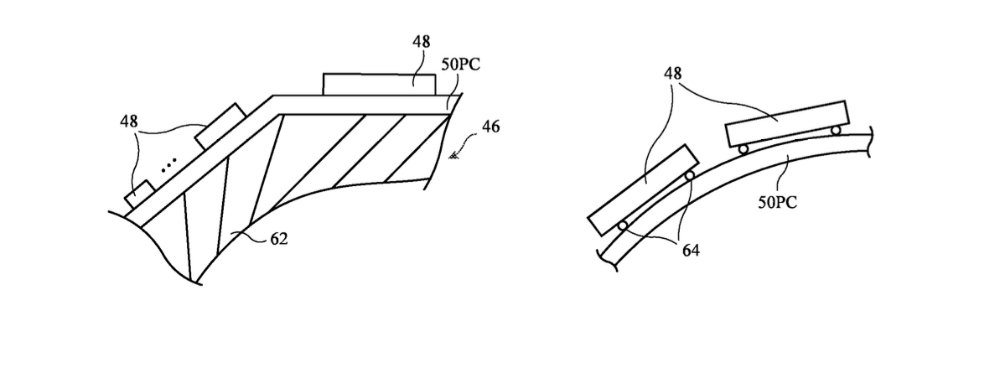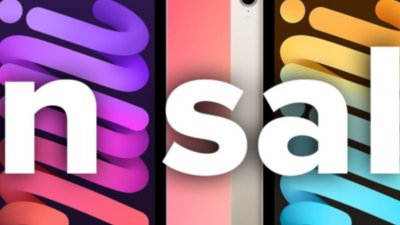Smart rings on fingers, smart bracelets on ankles, and smart lanyards around necks — far beyond the Apple Watch and AirPods, Apple has wide-ranging plans for a new wearable.
There have been so many Apple patents and patent applications regarding smart rings that there's no question the company is taking this wearable seriously. But for the first time, a newly-granted patent has made it undeniably clear that there is much more to this device idea than putting a ring on a finger.
Apple's "Electronic system with ring device" does propose a smart ring, and does repeatedly use the example of it being worn on the finger. But this time, it's specifically called an example — one example among many other possibilities — because all
Apple cares is that it "have a ring shape."
"The ring device may have a ring shape that allows the ring device to be worn on a body part of a user," says the patent, "(e.g., around a user's wrist, arm, leg, ankle, neck, head, and/or other body part)."
Like any firm, Apple writes its patents in such a way as to be as broad and even vague as the US Patent Office allows. But rather than just being a way that Apple could later sue anyone for making any ring-shaped smart device, this one goes into detail about use cases.
Most of that detail concerns what other devices the ring-shaped one could interact with. So there is a great deal of information about "companion devices" where, for instance, the wearer could use "hand gestures, pointing input... involving the position of the user's body."
"Because a ring device may be worn throughout the day, a ring device will generally be immediately available to the user," continues the patent. "This facilitates interactions between the ring device and objects in the user's environment."
"Consider, as an example, a scenario in which a user is walking through a building," says Apple. "The user views an item on a shelf that contains an NFC tag with information about the item... [the ring] device may then take suitable action..."
"As an example, [the ring] device may retrieve a web page...," it continues. "The information associated with the identifier and/or other NFC tag information that is obtained... may be presented to the user with the output devices of [the] device (e.g., by displaying this information in the form of a label, an image, or other visual content on a display."
You're not going to get a screen on a device the size of a wedding band. But you could on a lanyard.
While Apple does not say this, that example of a user wearing such a device as they walk through a building does have some obvious other users. It could allow that user access to certain areas of the building, for instance, or deny them entry to other parts.
That only works if there is user authentication in some form, because otherwise anyone could take the ring device and go where they like.
But presuming that there is some intelligent authentication around the smart device, this could equally see Apple selling ankle bracelets for tagging individuals on release from prison.
Naturally, Apple concentrates on what it considers more positive uses — although some of it also raises privacy concerns.
Privacy risks in a smart ring device
"[One] aspect of the present technology is the gathering and use of information such as information from input-output devices," says Apple. "The present disclosure contemplates that in some instances, data may be gathered that includes personal information data that uniquely identifies or can be used to contact or locate a specific person."
"Such personal information data," says the patent, "can include demographic data, location-based data, telephone numbers, email addresses, twitter ID's, home addresses, data or records relating to a user's health or level of fitness (e.g., vital signs measurements, medication information, exercise information), date of birth, username, password, biometric information, or any other identifying or personal information."
That does suggest that a smart ring, or smart ring-shaped device of any description, could contain health sensors. It's possible that such a device would just get that data from an associated iPhone, but there's no benefit to the user of it doing that.
If an Apple Watch collects health data from an associated iPhone, for instance, the user can see it on the screen. With a ring, at least a literal finger ring, the data would have nowhere to go unless it was spoken aloud.
So either the ring device has a speaker, or it's able to actually measure some health data, and then relay that sensor information to another device.
Apple patents that touch on privacy issues always include a considerable section on the importance of keeping data safe and secure. In this case, though, the privacy section is unusual in that it specifies US laws by name.
"For instance, in the United States, collection of or access to certain health data may be governed by federal and/or state laws, such as the Health Insurance Portability and Accountability Act (HIPAA)," it says, "whereas health data in other countries may be subject to other regulations and policies and should be handled accordingly."
This patent is credited to four inventors. They include Travis J McQueen, whose previous work includes research into wall-mounted devices that could track objects within rooms.
 William Gallagher
William Gallagher





-xl-m.jpg)


-m.jpg)







 Amber Neely
Amber Neely
 Andrew Orr
Andrew Orr



 Christine McKee
Christine McKee
 Chip Loder
Chip Loder








12 Comments
"
Other body part!?
What's left after all that (discounting fingers of course)?
Surely not from Apple? That would be taking fruity to a whole new level!
This sounds very similar to the Fitbit (Google) patent, and perhaps for the same uses.
https://www.wareable.com/fitbit/fitbit-smart-ring-patent-8486
Samsung has also filed for a patent on a ring-shape health advice, and just as vaguely described as Apple's. Then there's Movano, already well underway with FDA approvals, plus a few others with products already being sold or in the planning stages. No shock that Apple is after the same market.
The race is underway to move to another form factor.
I never opened a comments section so fast in my life. Didn’t disappoint.
Don't get cocky Apple
Coming soon: a robotic necktie - guaranteed to never strangle the wearer by accident!